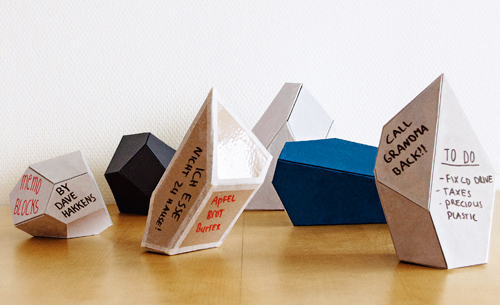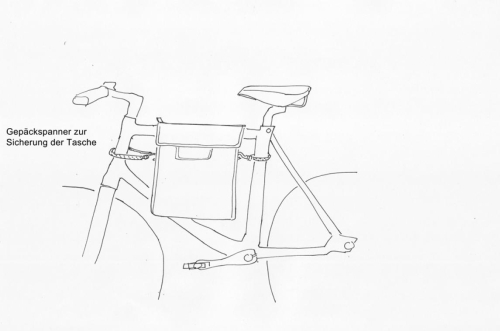Those of you who actually read what we write rather than simply enjoying our genre redefining photography* will know that we regularly bemoan the lack of design coverage in the serious print media.
All too often it seems "design" is something to be entrusted to blogs featuring sugar sweet hymns to our cuddly, snuggy-wuggy world and all backed-up by Gaussian heavy, focus soft photos. Or worse, instagram photos.
And so we raise our hats and our flagons to the Süddeutsche Zeitung Magazine for their "Der frühe Vogel" feature at the weekend.
The early bird - Der frühe Vogel - may not necessarily catch the worm, but can have its Christmas shopping done by mid November, being the motto.
And to this end the colleagues in Munich asked eight design studios to submit an object that readers can make themselves.
The result isn't a call to arms nor the the begin of an Open Design, Maker revolution.
But is a collection of idiosyncratic objects that can not only be gifted at Christmas, but used all year round as stylish reminders that design is a way of thinking. Not a job.

Inspired by the soullessness of the inter-changeable ornaments to be found at trade fairs, Hella Jongerius developed a family of paper creatures to use on stands featuring her works: ornaments with a poetry, a life.
Equally as interchangeable are of course the mass produced decorations that promise to fill us and our homes with Christmas cheer through their soul-wrenching uniformity.
And so, thankfully, Hella Jongerius shows us how to build her "Penguin Prop". A charming little fella who can be coloured and personalised as you wish.
Just as "Penguin Prop" arose from personal thoughts over furnishings, so too did Astleuchter from Nils Holger Moormann.
Nils needed a lamp for the meeting room in his Aschau HQ, and one night inspiration blew in from the forest. Literally.
As one would expect from a Nils Holger Moormann product Astleuchter is a delicate, dactylic blend of simplicity and ingenuity.
Or put another way, Astleuchter is a chandelier made from... well a tree branch.
Elsewhere in the collection Werner Aisslinger presents bike crossbar panniers made from a heavy duty PVC shopping bag: Sam Hecht offers up a plant pot stand that hides its technical complexity behind a facade of domestic banality; Dave Hakkens introduces us to his his environmentally responsible answer to the Post-it note; Sebastian Herkner shows us how to create a shelving system based around broom handles; Stockholm's Note Design Studio have created a newspaper/magazine rack that owes as much to the clarity of Bauhaus as the forests of Scandinavia; and last but not least Alfredo Häberli has dreamed up a delightful Candelabra for those long winter evenings.

Aside from the items themselves, the real joy with the collection is that not only are the majority of the objects things the designers had already designed for their own use, and are now sharing with us. But all eight items come with construction plans sketched or otherwise composed by the designers.
Plans that offer a brief insight into the personality of the designer involved, and the way they work, think, develop ideas.
As such the article is not just a practical design article. But a genuinely interesting and entertaining piece of design journalism.
Well done to all involved.
All designs and their construction plans can be found at sz-magazin.sueddeutsche.de
Most of the construction plans are in English, a couple however are in German. But all are excellently illustrated and so should be self-explanatory. And perhaps best of all, most of the objects could be made by children......
* The Harry Portman PR Bible. Chapter 5 Rule 2. "If you can't do it well. Call it "genre redefining". Most people, and certainly all Guardian readers, will believe you.